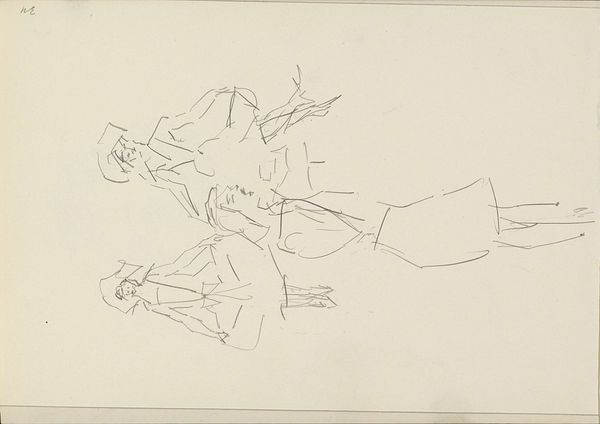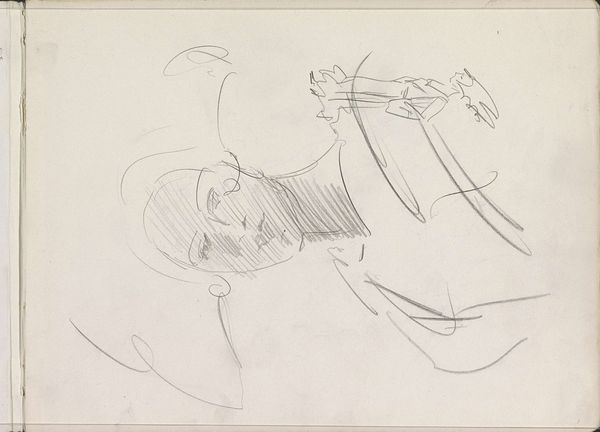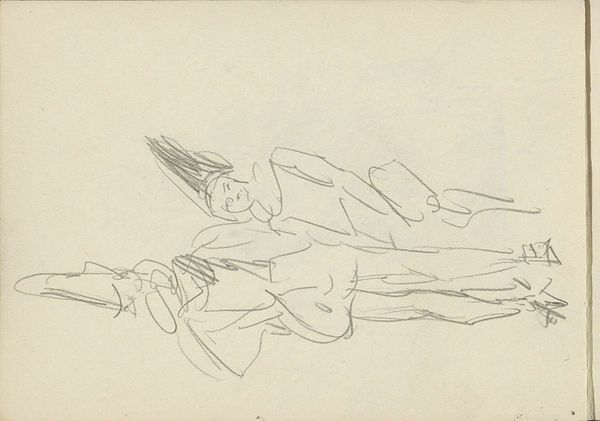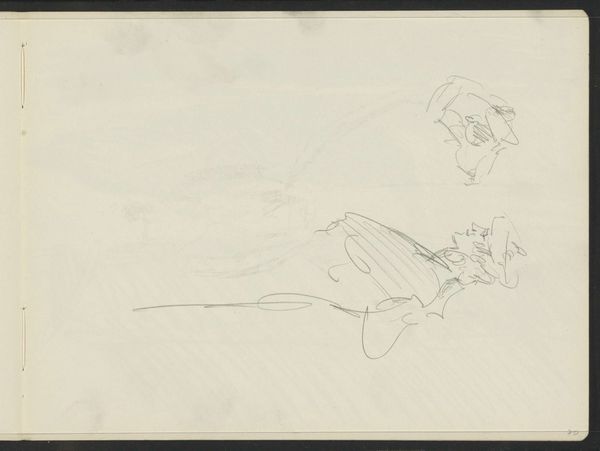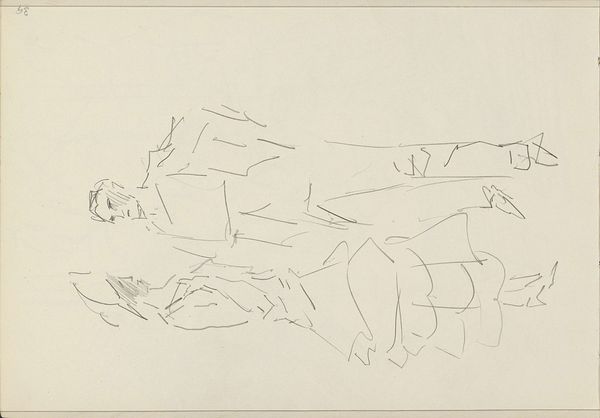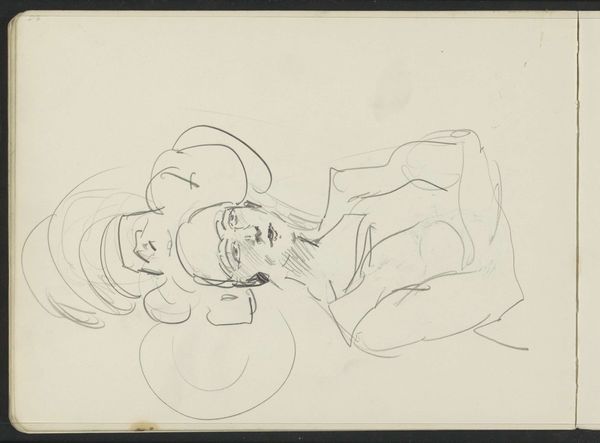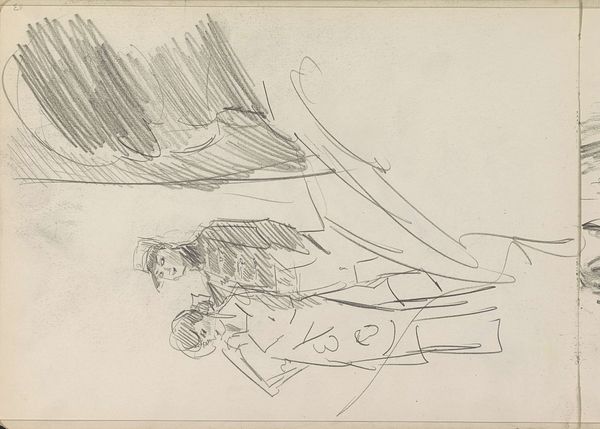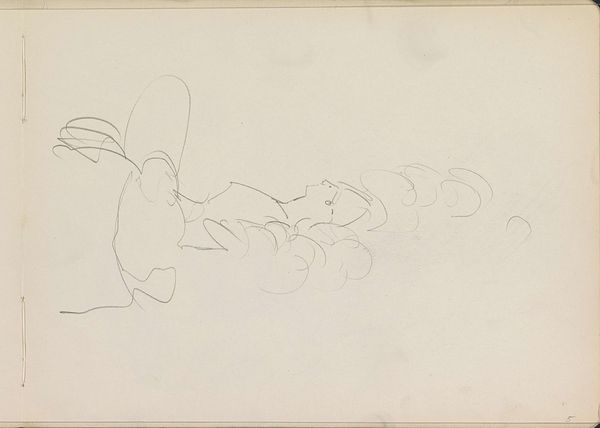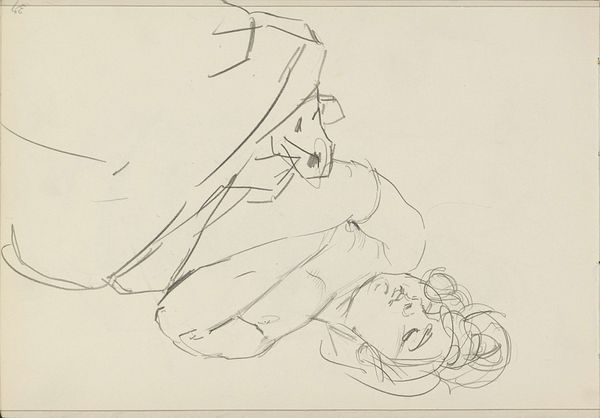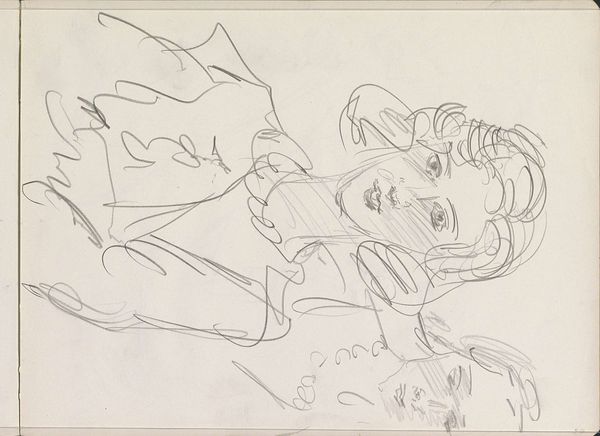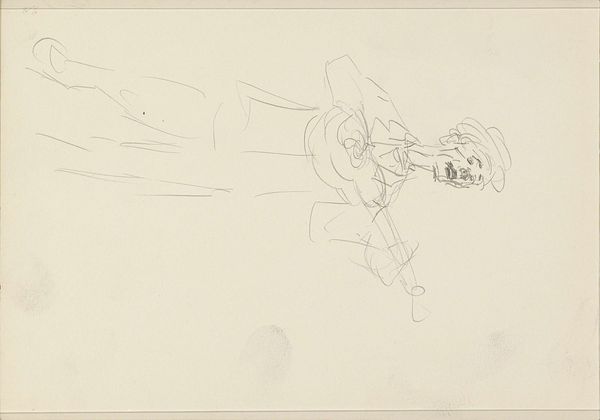
Copyright: Rijks Museum: Open Domain
Editor: Here we have Isaac Israels’ “Studieblad met Japanse figuren,” made sometime between 1875 and 1934, using pencil on paper. There’s a dreamy, almost ethereal quality to this sketch. What historical factors might have influenced this piece? Curator: The late 19th and early 20th centuries saw a surge in Japonisme, where Western artists were fascinated by Japanese art and culture. This piece may show how Israels engaged with Japanese aesthetics, even within the constraints of a sketchbook. We might ask ourselves, how did this cultural exchange shape the artistic landscape of the time, and how did it impact Israels’ artistic choices and those available to him? Editor: So it's part of a bigger trend. I see. I also notice that it’s a quick sketch, not a highly polished work. Does that affect how we should interpret it? Curator: Absolutely. As a sketchbook piece, it offers a glimpse into the artist's process, his initial thoughts and experimentations. We’re seeing art that hasn’t been fully processed for public consumption. What does the immediacy of this medium allow, both for the artist, and for us as viewers? Does its private nature add to or detract from its power as a cultural artifact? Editor: That makes sense. It almost feels more intimate. I never really thought about how the *type* of artwork influences its cultural significance. Curator: Exactly. Considering art within the structures of its creation, exhibition, and reception deepens our appreciation of both the artist and the art world itself. What has been collected in museums and galleries, and by whom, shows the impact on art history. Editor: I'll definitely be looking at sketches in a new way now! Curator: It all informs how we interpret the narratives embedded within artistic production.
Comments
No comments
Be the first to comment and join the conversation on the ultimate creative platform.
